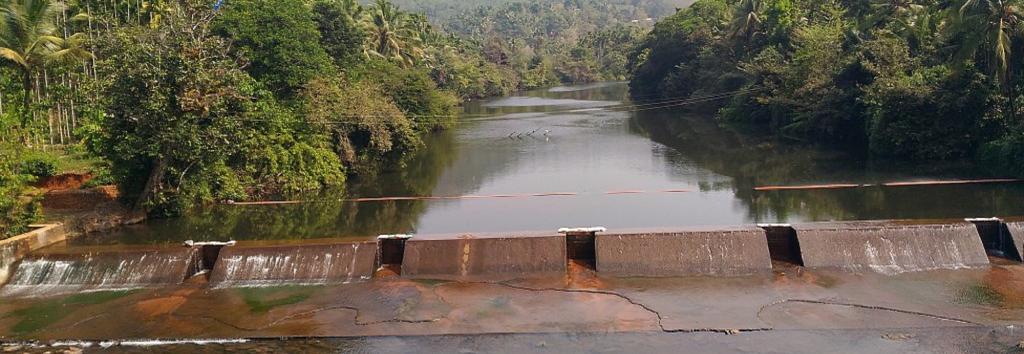Advent of modern water conservation systems and unequal distribution of labour work in Karnataka, Kerala districts have pushed them into decline

‘Kattas’ — temporary check dams built across streams and rivulets — used to be a common sight in the districts of Kerala and Karnataka till two decades ago. These traditional structures were constructed every year to conserve water for summer irrigation.
Thousands of these structures were prominently found in the Udupi and Dakshina Kannada districts of Karnataka and Kasaragod district of Kerala.
However, the advent of bore wells and modern water conservation systems and unequal distribution of work among those involved in the construction pushed them into decline.
Built using kaccha stones and locally available wood, kattas are erected in the month of November or December, after monsoons subside. Interestingly, this is the only useful water conservation method that can be implemented even after the monsoon ends.
A series of check dams constructed at the right time ensures the stream runs for an additional four to six weeks. Each katta invariably has a diversion channel.
But the cost of constructing kattas is high — it requires skilled labour and fresh soil. Though it’s an ex-situ water conservation method, local materials and local knowledge are used. These two factors make the construction somewhat affordable.
Back in the day, only overflowing water from these dams was used. It was transported through open channels to irrigate paddy fields or arecanut gardens. Slowly, this system changed. Now, pumpsets are used to lift stored water.
Even today, compared to many other water conservation or rain harvesting works, unit cost of conserving a kilolitre of water would be less than other methods such as plastic-lined tanks.
Kattas are built with people’s participation. However, between partners, proportionate cost-sharing with respect to benefits is rare. In many cases, the burden of responsibility falls on one partner, who gets it constructed by employing skilled labourers. The cost of expenditure is borne by one or two families. This is the root cause of the decline.
Of course, several labour-saving innovations have been proposed in the last two decades. Using sand bag kattas; plastic or fibre sheets; constructing semi-permanent kattas using mild steel sheets and concrete foundation are some of them. But they haven’t withstood the decline. In villages that used to construct hundreds of kattas till decades ago, it is hard to see even a few of them today.
‘Madaka’ is another highly useful traditional water harvesting system. It is a unique structure constructed on the upper reaches of undulating topography. Laterite is the soil type in this area.
It is different from ‘kere’ (earthen tank), which is dug to catch water from the sub-soil. Madaka is not fully man-made.
In an area that has natural slopes, our ancestors would identify a bottleneck and construct an earthen wall there. This would impound crores of litres of rainwater that would otherwise go into the sea.
In fact, madakas were constructed to irrigate paddy fields in case of a delayed monsoon. Though there is no inventory of madakas, the aforementioned three coastal districts would have more than 3,000 madakas till a few decades ago.
Madakas need not have a perennial water source of their own. In watershed parlance, it would act as a percolation pond or nala bundh. Once the stored rainwater percolates fully, say in November or December, it woud dry up. But in the process, the percolated water would augment the water table in the foothills and benefit a large community residing below.
Today, many people don’t know how to identify a madaka. Many of them are encroached. Constructions have come up in others. Their walls have begun to leak because of lack of maintenance. In three districts, you can hardly find a few dozen madakas today.
Both kattas and madakas need social movements for revival. A madaka on the top of a watershed, and a few kattas on streams or rivulets below, would go a long way in water sustainability.
First published by Down to Earth on 27 Feb. 2020